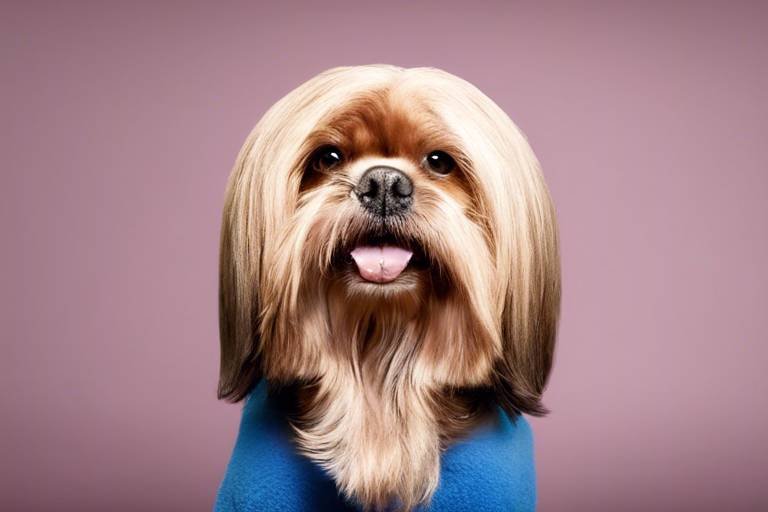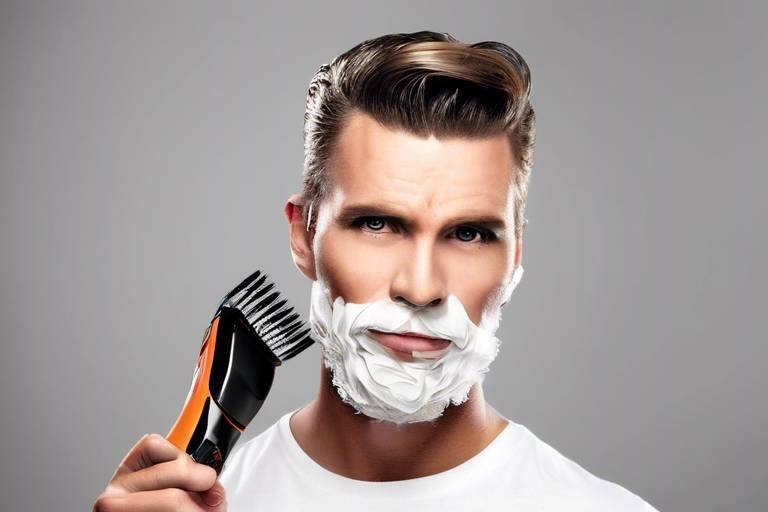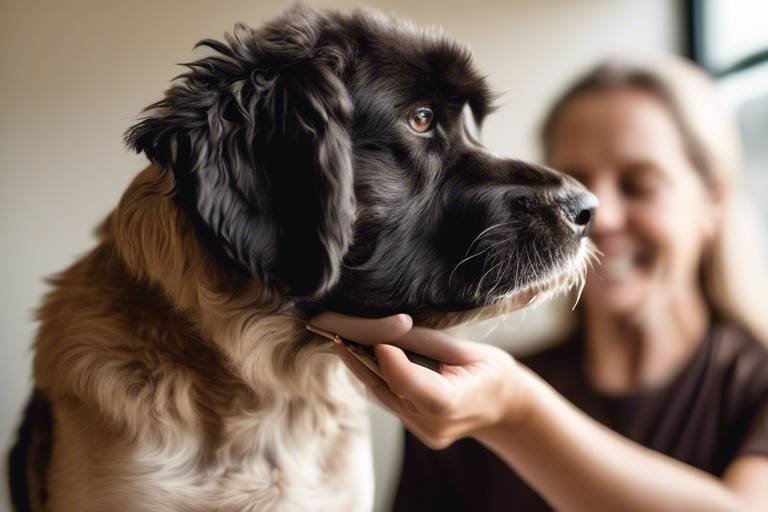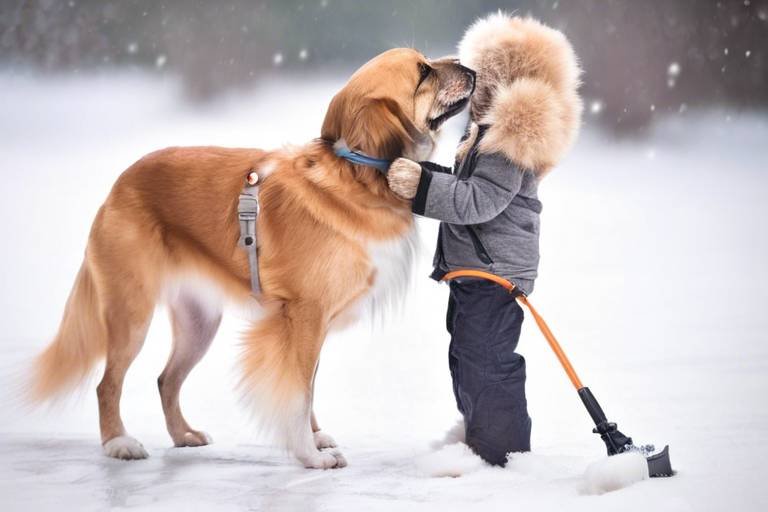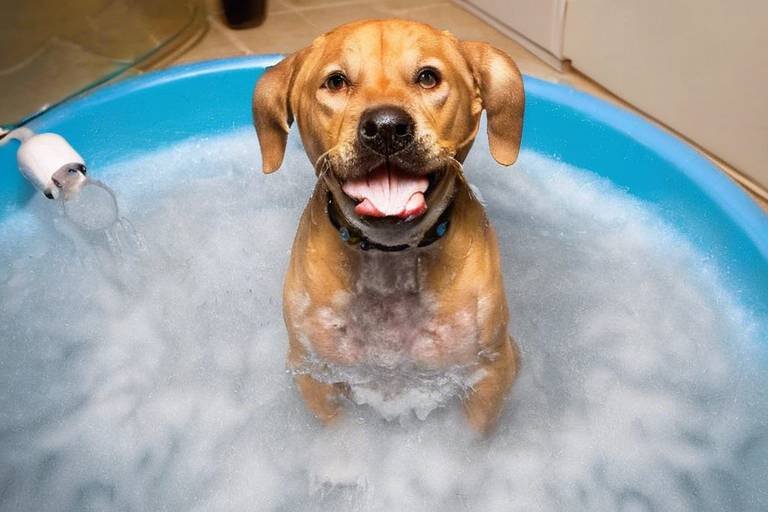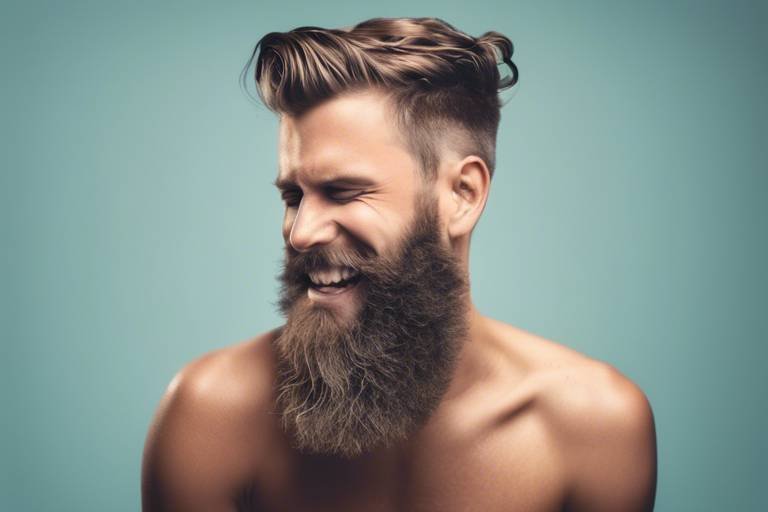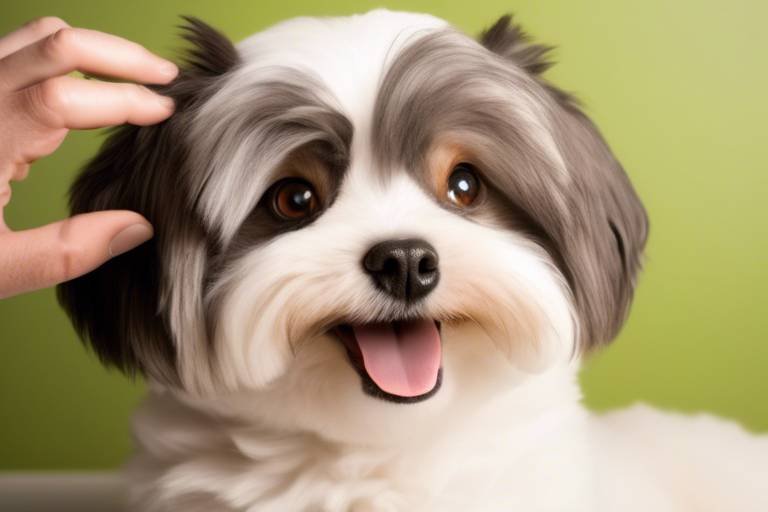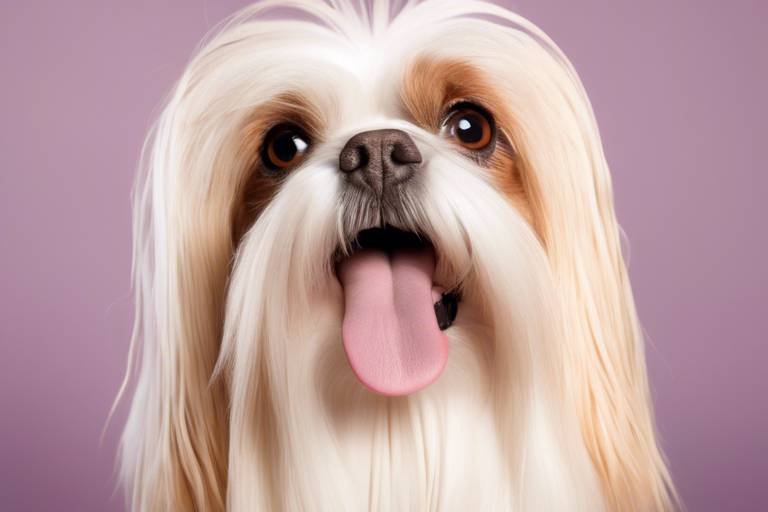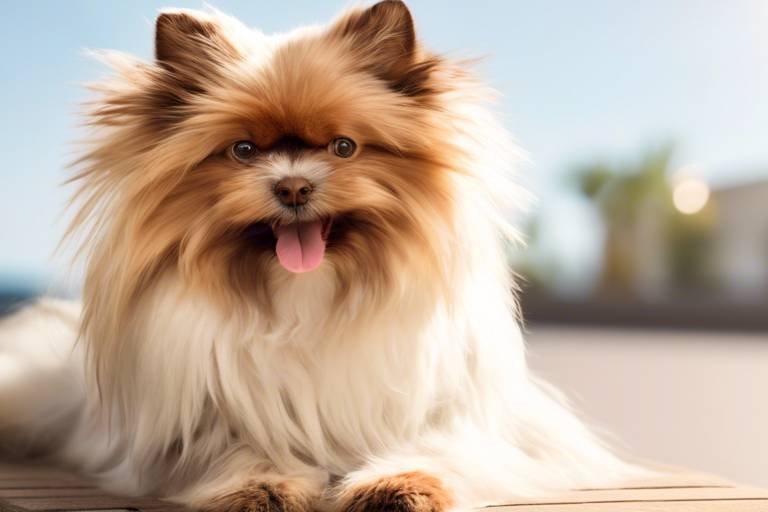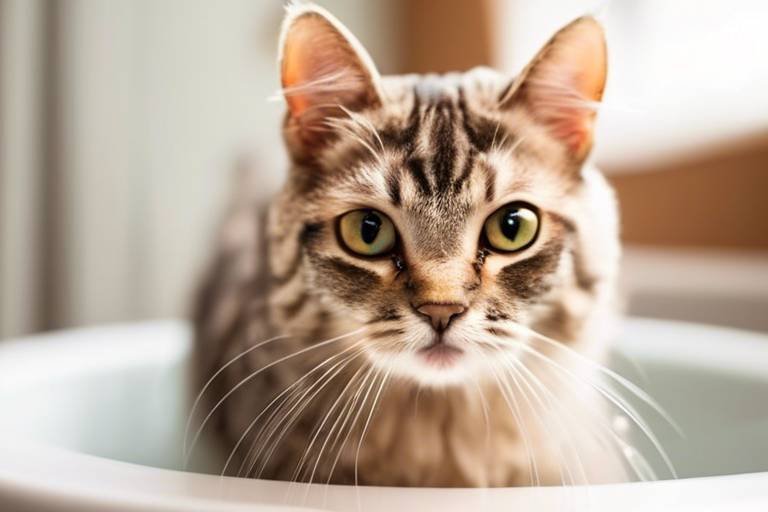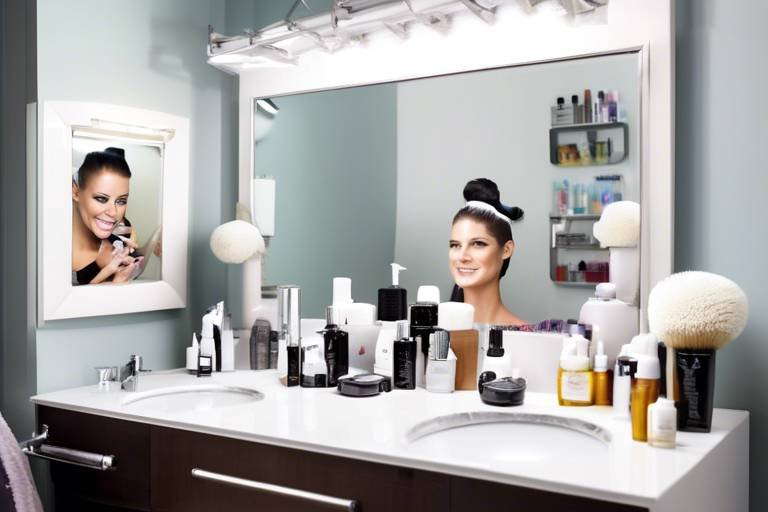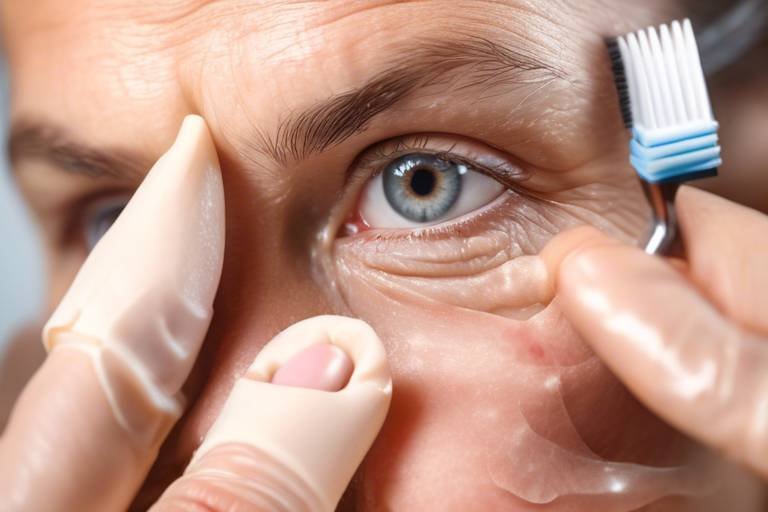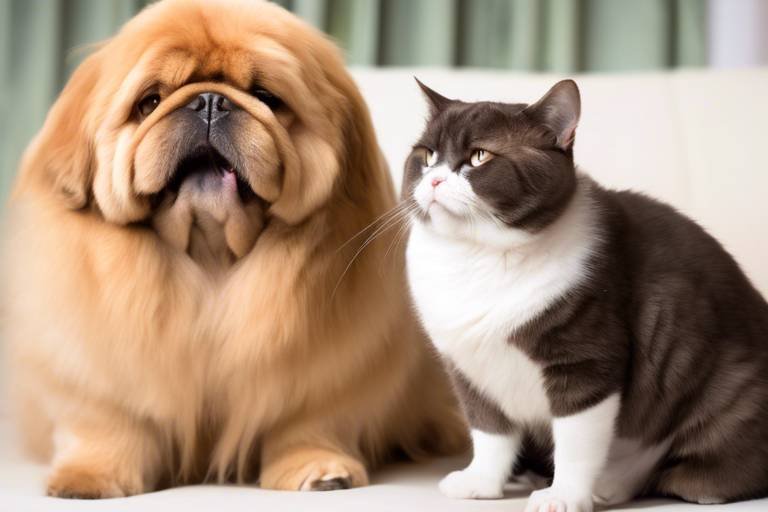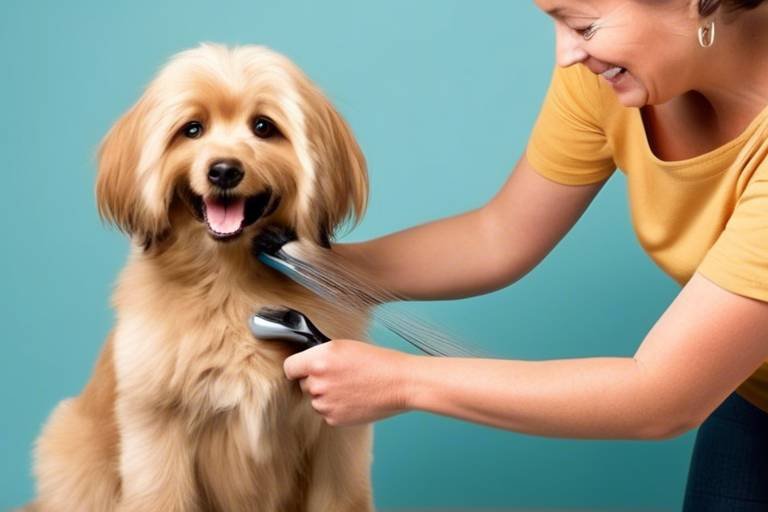The Best Practices for Grooming Puppies
Grooming your puppy is not just about keeping them looking cute and fluffy; it’s an essential part of their overall health and well-being. Just like humans, puppies need regular care to maintain their physical appearance and comfort. Imagine your puppy’s coat as a beautiful garden that requires regular tending to thrive. In this article, we’ll explore the best practices for grooming your furry friend, ensuring that both you and your puppy have a positive and enjoyable experience.
Before diving into the grooming process, it’s vital to understand that different breeds come with varying coat types. Each coat type has its own unique needs, much like how different plants require different amounts of sunlight and water. For instance, a Golden Retriever has a thick, water-repellent double coat that needs regular brushing to avoid matting, while a Chihuahua has a short coat that requires less frequent grooming. Recognizing your puppy's coat type is crucial for effective grooming and maintenance. By knowing whether your puppy has a curly, straight, or wiry coat, you can tailor your grooming routine to meet their specific needs.
Investing in the right grooming tools can make the process smoother and more enjoyable for both you and your puppy. Think of grooming tools as your trusty sidekicks in the adventure of keeping your puppy clean and comfortable. Here are some must-have tools for various grooming tasks:
Choosing the right brushes and combs is vital for maintaining your puppy's coat health. Different types of brushes serve various purposes, and understanding their uses is key. For instance, slicker brushes are fantastic for removing tangles and mats, while bristle brushes work well for smoothing out the coat. If your puppy has a long, flowing coat, a wide-toothed comb can help detangle without causing discomfort. Investing in quality brushes will not only keep your puppy looking gorgeous but will also promote healthy skin and coat.
Shedding can be a significant challenge for many pet owners. It’s like trying to keep the leaves off your lawn in the fall! Discover effective shedding tools such as deshedding brushes and grooming gloves that help manage loose fur and keep your home clean. Regular use of these tools can significantly reduce the amount of hair that ends up on your floors and furniture, making your life a little easier.
Bathing is an essential part of grooming. Just like a refreshing shower can rejuvenate us, a bath can do wonders for your puppy. Explore the best shampoos, conditioners, and bathing tools to ensure a pleasant experience for your puppy. Look for gentle, puppy-specific shampoos that won’t irritate their skin. Remember, bath time can be a fun bonding experience, so make it enjoyable with plenty of praise and treats!
Regular nail trimming is crucial for your puppy's health. Neglected nails can lead to discomfort and even injury. This section provides tips on how to safely trim nails and the tools needed for the job. Start by introducing your puppy to the nail clippers gradually, allowing them to sniff and explore the tool. When it’s time to trim, ensure you have a good pair of clippers and a nail file on hand. If you’re unsure, don’t hesitate to ask your vet or a professional groomer for guidance.
Creating a consistent grooming schedule helps your puppy become accustomed to the process. Think of it as setting up a regular playdate; the more familiar they become, the more they’ll look forward to it! Establish a routine that works for both you and your puppy, incorporating brushing, bathing, and nail trimming. Consistency is key, and over time, your puppy will learn that grooming is a normal part of their life.
Understanding how often to groom your puppy depends on their breed and coat type. Generally, puppies with longer hair require more frequent grooming sessions than those with shorter coats. For example:
| Coat Type | Grooming Frequency |
|---|---|
| Long-haired breeds | 2-3 times a week |
| Medium-haired breeds | Once a week |
| Short-haired breeds | Every 2-4 weeks |
These guidelines can help you create a grooming schedule that keeps your puppy looking and feeling their best!
Using positive reinforcement during grooming can make the experience enjoyable for your puppy. Just like we respond better to encouragement than criticism, your puppy will thrive on praise and treats. Discover effective techniques to encourage calm and cooperative behavior during grooming sessions. Reward your puppy with treats and affection for good behavior, and soon they’ll associate grooming with positive experiences.
Being aware of your puppy's body language is essential during grooming. Signs of discomfort can include whining, pulling away, or trying to escape. This section helps you identify these signs and how to address them promptly. If your puppy seems anxious, take a break and try again later. Remember, grooming should be a bonding experience, not a stressful one.
Sometimes, professional grooming services are necessary. Learn when to seek help from a groomer and what to expect from a professional grooming session. If you’re unsure about how to groom your puppy or if they have a particularly challenging coat, a professional groomer can be a lifesaver!
Finding the right groomer for your puppy is crucial. Look for someone who is experienced and has a good reputation. Ask for recommendations from friends or your veterinarian. It’s also a good idea to visit the grooming salon beforehand to ensure it’s clean and welcoming.
Professional grooming offers numerous benefits, including specialized care and expertise. Groomers are trained to handle different coat types and can provide services that you may not feel comfortable doing at home, such as ear cleaning or anal gland expression. Explore the advantages of entrusting your puppy's grooming needs to a professional, ensuring they receive the best care possible.
Q: How often should I groom my puppy?
A: It depends on your puppy’s breed and coat type. Long-haired breeds may need grooming several times a week, while short-haired breeds may only need it every few weeks.
Q: What should I do if my puppy doesn't like grooming?
A: Use positive reinforcement techniques, such as treats and praise, to create a more enjoyable experience. If your puppy is too anxious, take breaks and try again later.
Q: When should I start grooming my puppy?
A: It’s best to start grooming your puppy at a young age to help them get used to the process. Introduce them to grooming gradually and make it a positive experience.
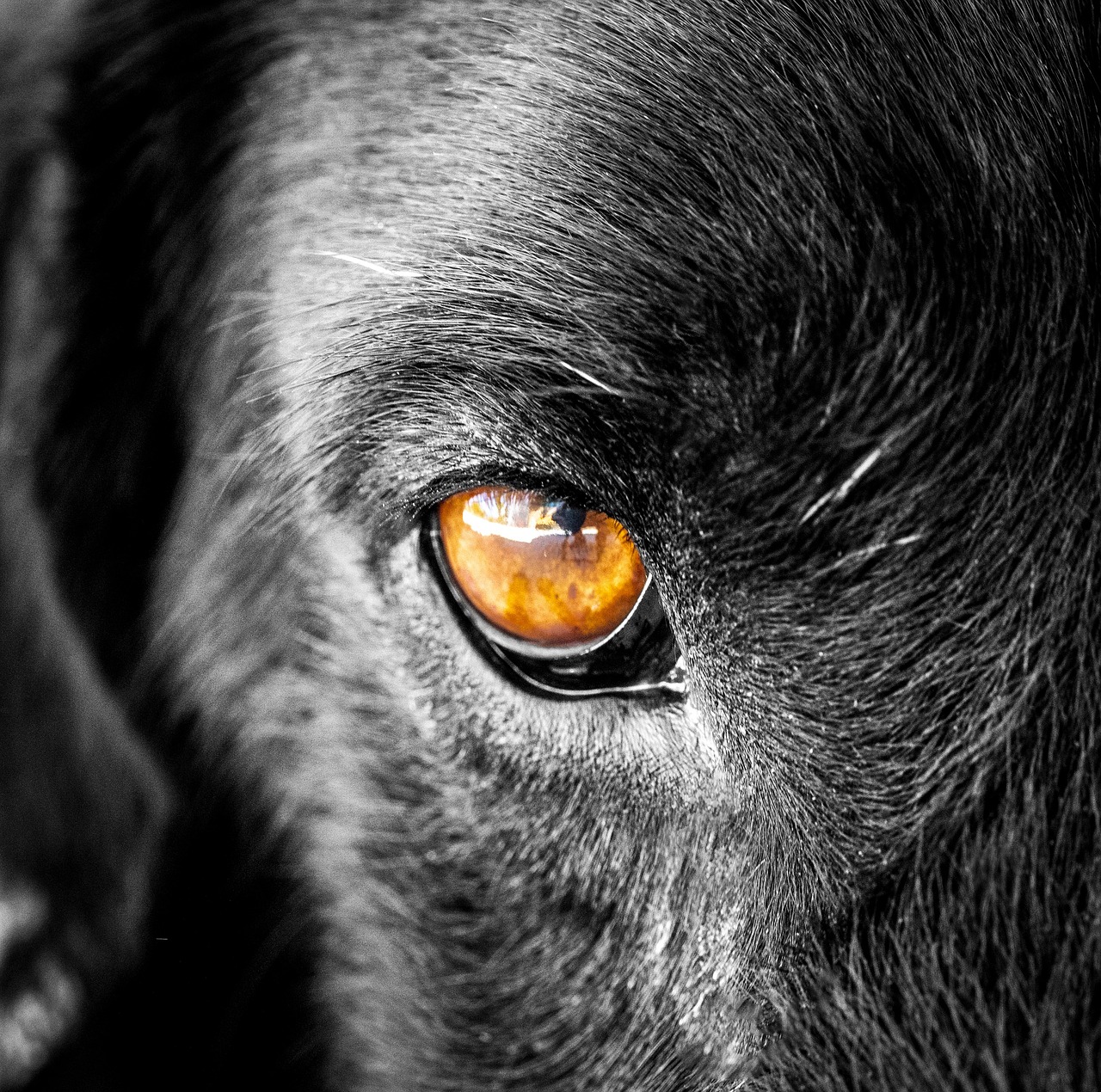
Understanding Puppy Coat Types
When it comes to grooming your puppy, one of the first things you need to understand is their coat type. Just like humans, puppies come in a variety of shapes, sizes, and, yes, coat types! Each breed has its unique fur characteristics that dictate the grooming techniques you'll need to use. So, why is it so important to recognize your puppy's coat type? Well, using the right grooming methods not only keeps your puppy looking fabulous but also promotes their overall health and comfort.
There are generally three main types of puppy coats: short, medium, and long. Each type has its own grooming requirements, and knowing these can save you a lot of time and effort. For instance, short-haired puppies, like Beagles or Boxers, typically require less grooming than their long-haired counterparts, such as Golden Retrievers or Shih Tzus. However, don't be fooled into thinking that short-haired breeds are maintenance-free; they still benefit from regular brushing to remove loose hairs and distribute natural oils.
On the other hand, puppies with medium to long coats often need more frequent grooming sessions. These coats can mat easily, especially if the puppy is active or spends time outdoors. Regular brushing not only keeps their coat tangle-free but also helps you check for any skin issues or parasites lurking beneath the fur. It's like a little health check every time you groom!
To help you understand the different coat types better, here's a quick breakdown:
| Coat Type | Characteristics | Grooming Needs |
|---|---|---|
| Short Coat | Close to the skin, sleek, and shiny | Brush weekly; occasional baths |
| Medium Coat | Soft and fluffy, with some length | Brush every few days; regular baths |
| Long Coat | Flowing and luxurious, may be wavy or straight | Daily brushing; frequent baths |
Additionally, some puppies have a double coat, which consists of a soft undercoat and a tougher outer coat. Breeds like Huskies and Shepherds fall into this category. They typically shed more and require specialized grooming tools to manage their fur effectively. It's essential to invest in a good de-shedding tool to keep your home fur-free and your puppy comfortable.
Understanding your puppy's coat type is just the first step in establishing a successful grooming routine. Once you know what you're dealing with, you can choose the right tools and techniques to keep your furry friend looking and feeling their best. Remember, grooming should be a bonding experience, so take your time and enjoy the process!
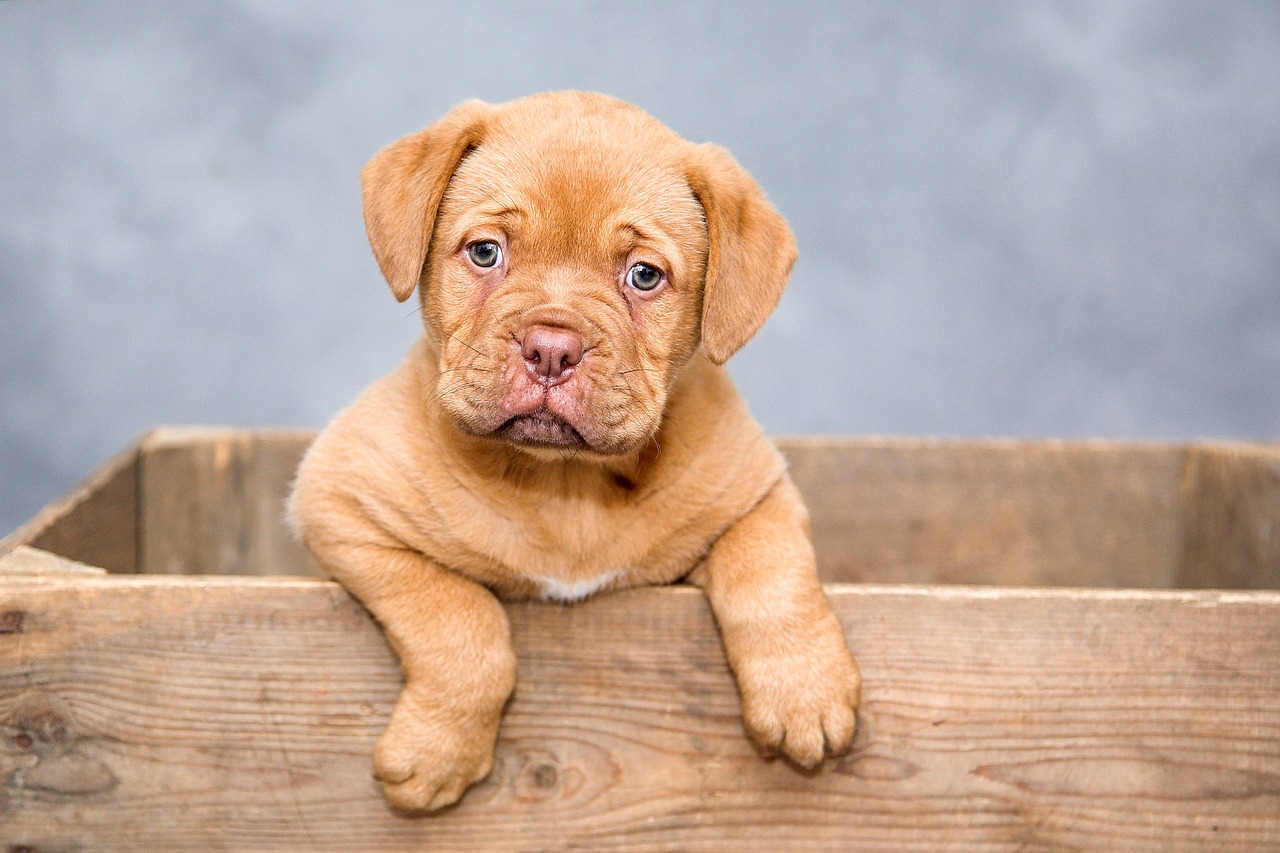
Essential Grooming Tools
When it comes to grooming your puppy, having the right tools can make all the difference. Think of grooming tools as your trusty sidekicks in the quest for a clean and happy pup! Just like a chef needs the right utensils to whip up a delicious meal, you need the best grooming tools to keep your furry friend looking and feeling their best. So, what exactly should you have in your grooming arsenal? Let’s dive into the essentials!
First up are brushes and combs. These are your go-to tools for maintaining your puppy's coat. Depending on the type of coat your puppy has, you'll want to choose the right brush. For example, if your puppy has a long, flowing coat, a slicker brush will help remove tangles and debris effectively. On the other hand, if your puppy has a short coat, a bristle brush might be the best option to keep their fur shiny and smooth. Don’t forget about combs! They’re perfect for getting into those hard-to-reach spots and can help with detangling. Here’s a quick breakdown of common brush types:
| Brush Type | Best For |
|---|---|
| Slicker Brush | Long-haired breeds |
| Bristle Brush | Short-haired breeds |
| Undercoat Rake | Double-coated breeds |
Next on the list are shedding tools. If you’ve ever experienced the joy of finding dog hair in every corner of your home, you know how important these tools can be! Shedding tools like deshedding brushes or grooming gloves can help manage loose fur and keep your home fur-free. Not only do they make your life easier, but they also ensure your puppy’s coat stays healthy by removing dead hair without damaging the skin.
Bathing supplies are another essential part of your grooming toolkit. Bath time can be a splashy affair, but with the right supplies, it can also be a fun bonding experience. Invest in a good quality puppy shampoo that is gentle on their skin. Look for products that are free from harsh chemicals and specifically formulated for puppies. You might also want to consider a conditioner to keep their coat soft and manageable. And don't forget about bathing tools! A non-slip mat can help your puppy feel secure during bath time, and a handheld sprayer can make rinsing much easier.
Last but definitely not least are nail care essentials. Regular nail trimming is crucial for your puppy’s health, as overgrown nails can lead to discomfort and even injury. Invest in a good pair of dog nail clippers or a nail grinder. If you’re unsure about trimming nails, you can always consult your vet or a professional groomer for tips on how to do it safely. Remember, it’s all about making the experience as stress-free as possible for your puppy!
In conclusion, having the right grooming tools not only makes the process smoother but also ensures that your puppy is comfortable and happy. So, gear up and get ready to pamper your furry friend!
- How often should I groom my puppy? It depends on the breed and coat type, but generally, a good rule of thumb is to groom at least once a week.
- What if my puppy doesn’t like being groomed? Start slowly and use positive reinforcement to create a more enjoyable experience.
- Can I use human shampoo on my puppy? No, it’s best to use a shampoo specifically formulated for dogs to avoid skin irritation.
Brushes and Combs
When it comes to grooming your puppy, choosing the right brushes and combs is as essential as picking the right food for their diet. Just like humans have different hair types that require specific care, puppies have unique coat textures that need tailored grooming tools. Understanding the various types of brushes and combs available can make a world of difference in maintaining your puppy’s coat health and appearance.
Let’s dive into the different types of brushes and combs you might consider. For instance, if your puppy has a long or flowing coat, a slicker brush is a fantastic choice. This brush has fine, short wires close together, which helps to remove tangles and mats without damaging the fur. On the other hand, if your puppy has a short coat, a bristle brush can help distribute natural oils and keep their coat shiny and healthy.
For puppies with a curly or wavy coat, a pin brush is often the best option. It features rounded tips that gently detangle while being kind to the skin. If your furry friend has a double coat, consider using an undercoat rake to remove loose fur from the underlayer, which can significantly reduce shedding and keep your home cleaner. Here’s a quick overview of the essential brushes:
| Brush Type | Best For | Key Features |
|---|---|---|
| Slicker Brush | Long-haired breeds | Removes tangles and mats |
| Bristle Brush | Short-haired breeds | Distributes natural oils |
| Pin Brush | Curly or wavy coats | Gentle detangling |
| Undercoat Rake | Double-coated breeds | Reduces shedding |
Now, let’s not forget about combs! They are equally important in your grooming toolkit. A comb can help you identify knots and tangles that a brush might miss. A fine-toothed comb is perfect for checking for fleas and debris, while a wide-toothed comb is great for detangling. These tools can be used in conjunction with brushes to ensure a thorough grooming session.
Lastly, always remember that grooming should be a positive experience for your puppy. Introduce these tools gradually and let your furry friend sniff and explore them before you start grooming. This way, they’ll associate the brushes and combs with fun and care, rather than fear or discomfort. With the right tools in hand and a little patience, you’ll be well on your way to keeping your puppy looking and feeling their best!
Q1: How often should I groom my puppy?
A1: The frequency of grooming depends on your puppy's breed and coat type. Long-haired breeds may require grooming several times a week, while short-haired breeds might only need it every few weeks.
Q2: Can I use human brushes on my puppy?
A2: It’s best to use brushes specifically designed for pets. Human brushes may not effectively remove loose fur and could irritate your puppy's skin.
Q3: What should I do if my puppy is afraid of grooming?
A3: Take it slow! Introduce grooming tools gradually, offer treats, and ensure the environment is calm. Positive reinforcement can help your puppy feel more comfortable.
Shedding Tools
When it comes to managing your puppy's shedding, having the right tools can make a world of difference. Shedding is a natural process for dogs, but it can quickly become overwhelming for pet owners, especially if you have a breed known for its fluffy coat. The right not only help keep your home fur-free but also promote a healthy coat for your puppy. So, let’s dive into the essential tools that can help you tackle shedding effectively!
One of the most popular tools in a pet owner's arsenal is the de-shedding tool. These specially designed tools have fine, metal bristles that reach deep into your puppy's undercoat, removing loose fur without damaging the top coat. Brands like Furminator and Hertzko offer a variety of sizes to suit different breeds, ensuring you find the perfect fit for your furry friend. Regular use of a de-shedding tool can significantly reduce the amount of fur that ends up on your floors and furniture.
Another great option is the rubber grooming mitt. These mitts not only help in removing loose hair but also serve as a massaging tool, which can make grooming feel like a spa day for your puppy. As you pet your dog with the mitt, the rubber bristles gently lift away dead hair while stimulating the skin, promoting blood circulation. Plus, puppies often love the sensation, making it an enjoyable experience for both of you!
For those stubborn mats and tangles, a mat splitter can be a lifesaver. This tool is specifically designed to cut through mats without pulling on your puppy's skin. It’s essential to use this tool carefully to avoid causing any discomfort. And remember, if your puppy has a particularly thick coat, you might want to invest in a dematting comb as well. This tool has wide teeth that can gently detangle fur without causing pain.
Lastly, don’t forget about a good vacuum cleaner designed for pet hair! While it’s not a grooming tool per se, a powerful vacuum can help you keep your home clean after grooming sessions. Look for models with special attachments for pet hair, as these can make cleaning up after your furry friend a breeze. Combining these shedding tools with regular grooming sessions will not only keep your puppy looking fabulous but will also enhance your bond with them.
- How often should I use shedding tools on my puppy?
It depends on your puppy's breed and coat type. Generally, using shedding tools once a week is a good starting point, but you may need to adjust based on how much they shed. - Are shedding tools safe for all breeds?
Most shedding tools are safe for all breeds, but it's essential to choose the right size and type for your puppy's coat. Always read the manufacturer’s guidelines. - Can I use human grooming tools on my puppy?
It's best to use tools specifically designed for pets. Human grooming tools may not be effective and could potentially harm your puppy. - What should I do if my puppy doesn't like grooming?
Start slowly and introduce the tools gradually. Use positive reinforcement, like treats and praise, to make the experience more enjoyable for your puppy.
Bathing Supplies
Bathing your puppy is not just about keeping them clean; it's an essential part of their grooming routine that contributes to their overall health and happiness. When it comes to bathing supplies, choosing the right products can make a world of difference. First and foremost, you'll need a high-quality puppy shampoo. It's crucial to select a shampoo that's specifically formulated for puppies, as their skin is sensitive and can react poorly to harsh chemicals found in regular dog shampoos or human products. Look for natural ingredients like oatmeal or aloe vera, which can soothe and moisturize your puppy's skin.
In addition to shampoo, consider using a conditioner designed for puppies. This can help detangle their fur and keep it soft and manageable. Puppies with longer or thicker coats may benefit from a leave-in conditioner to maintain moisture and reduce matting. Always remember to rinse thoroughly; any leftover product can irritate their skin and lead to discomfort.
Another essential bathing supply is a non-slip mat for the tub or bathing area. Puppies can be quite wiggly, and a non-slip surface can help them feel secure and prevent accidents. If you're bathing your puppy in the tub, using a handheld shower sprayer can make rinsing easier and more efficient. Just be sure to keep the water at a comfortable temperature—too hot or too cold can be distressing for your furry friend.
Lastly, don't forget to have a collection of towels ready for post-bath cuddles! Puppies love to be wrapped up in a cozy towel after a bath, and this can also help to dry them off effectively. If your puppy enjoys the bath and the entire process feels like a fun adventure, they'll be more likely to look forward to their next grooming session.
To summarize, having the right bathing supplies is vital for a successful grooming experience. Here’s a quick table of the must-have bathing supplies for your puppy:
| Bathing Supply | Purpose |
|---|---|
| Puppy Shampoo | Gentle cleansing and skin care |
| Puppy Conditioner | Moisturizing and detangling |
| Non-Slip Mat | Safety and comfort during bathing |
| Handheld Shower Sprayer | Easy rinsing |
| Towels | Drying and comfort post-bath |
With the right supplies, bathing can transform from a dreaded chore into a delightful bonding experience for both you and your puppy. So, gear up, and make bath time a fun adventure!
Q: How often should I bathe my puppy?
A: Generally, puppies should be bathed every 4-6 weeks, but this can vary based on their breed and activity level. Always consult your vet for personalized advice.
Q: Can I use human shampoo on my puppy?
A: It's not recommended. Human shampoos can be too harsh for a puppy's sensitive skin. Always opt for products specifically designed for dogs.
Q: What if my puppy dislikes baths?
A: Start with short, positive experiences and gradually increase the duration. Use treats and praise to create a positive association with bath time.
Q: Is it necessary to use conditioner?
A: While not mandatory, conditioner can help keep your puppy's coat soft and manageable, especially for those with longer or thicker fur.
Nail Care Essentials
When it comes to grooming your puppy, nail care is often overlooked, but it’s an essential part of their overall health and well-being. Just like us, puppies need regular nail trims to prevent discomfort and potential health issues. Long nails can lead to painful walking, and in some cases, they can even break or split, causing injury. So, how do you ensure your puppy’s nails are well-maintained? Let’s dive into the essentials!
First and foremost, it’s important to invest in the right tools. A good quality nail clipper is crucial. There are various types available, including scissor-style and guillotine-style clippers. Each has its pros and cons, so you may want to try a few to see which one feels most comfortable in your hand. Additionally, a nail file or grinder can be handy for smoothing out any rough edges after trimming. Remember, the goal is to make this process as stress-free as possible for both you and your puppy.
Before you even think about trimming, it’s a good idea to get your puppy accustomed to having their paws handled. Start by gently holding and massaging their paws during playtime or while they’re relaxed. This helps them associate paw handling with positive experiences. You can also reward them with treats or praise to reinforce this behavior. Establishing this comfort level is key to a successful nail trimming session.
When it’s time for the actual trim, make sure to have a well-lit area and a calm environment. If your puppy is particularly anxious, you might want to have a second person to help hold them still. It’s also wise to have some styptic powder on hand in case you accidentally cut too close to the quick—the sensitive part of the nail that can bleed. If this happens, don’t panic! Just apply the powder to stop the bleeding.
As a general rule, you should aim to trim your puppy’s nails every 3 to 4 weeks, but this can vary depending on their activity level and the surfaces they walk on. Puppies that spend a lot of time on hard surfaces may naturally wear down their nails more than those that walk on softer ground. Pay attention to their nails and adjust your grooming schedule accordingly.
Lastly, always keep an eye on your puppy’s behavior during nail trimming. If they seem excessively fearful or agitated, it may be worth considering a professional groomer. They have the experience and tools needed to make the process easier for your furry friend. Remember, nail care is not just about aesthetics; it’s about ensuring a happy, healthy puppy!
- How often should I trim my puppy's nails? Generally, every 3 to 4 weeks, but it depends on their activity level.
- What should I do if I cut the quick? Apply styptic powder to stop the bleeding and comfort your puppy.
- Can I use human nail clippers on my puppy? It’s best to use clippers designed specifically for pets to avoid injury.
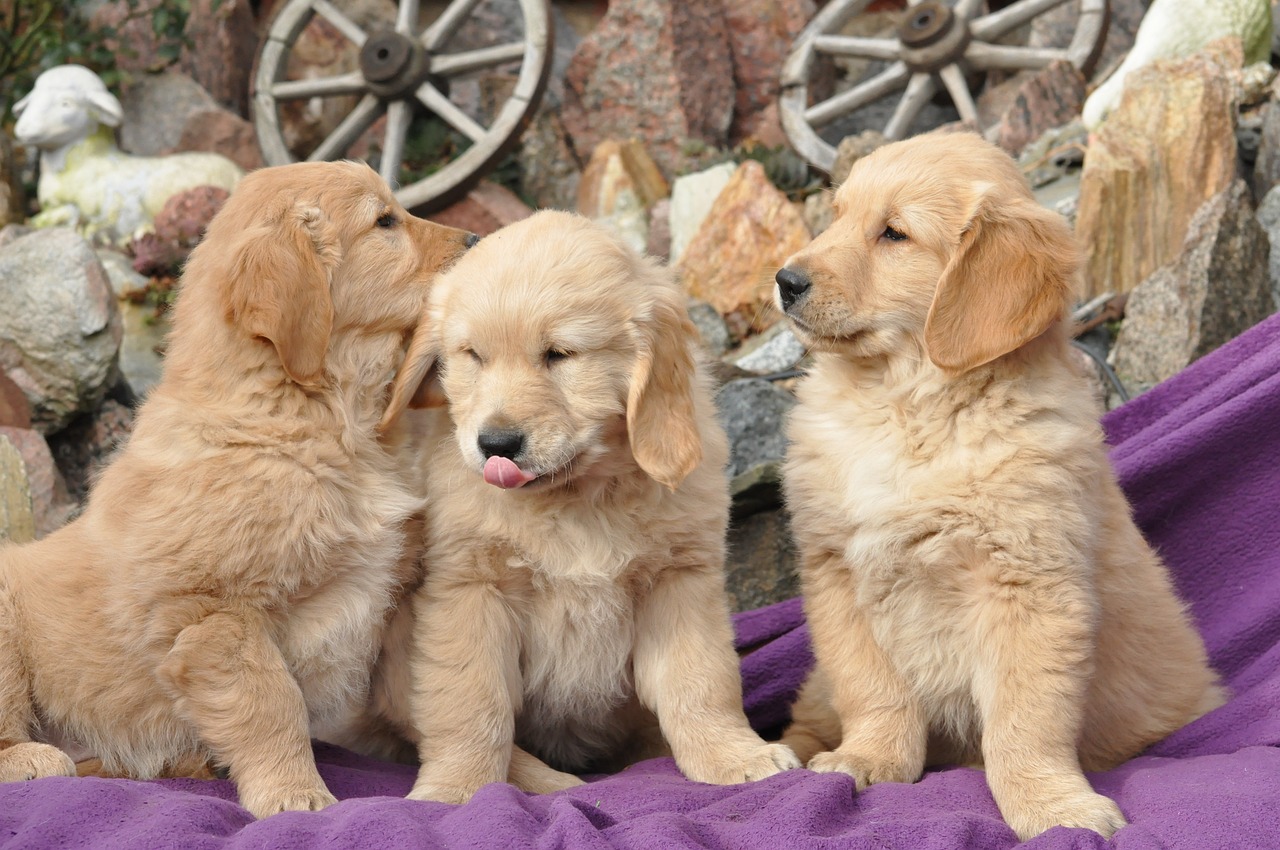
Establishing a Grooming Routine
Creating a consistent grooming routine is not just a chore; it's an essential part of your puppy's overall well-being. Think of grooming as a bonding experience that helps your furry friend feel comfortable and loved. By establishing a routine, you're not only keeping your puppy's coat healthy and clean but also building trust and familiarity with the grooming process. Imagine your puppy looking forward to these sessions, wagging their tail in excitement rather than trembling in fear. So, how do you get there?
First and foremost, it’s important to choose a schedule that works for both you and your puppy. Puppies have different grooming needs based on their breed, coat type, and lifestyle. For example, long-haired breeds may require more frequent brushing to prevent mats and tangles, while short-haired breeds might need less frequent grooming. A good rule of thumb is to start with a weekly grooming session and adjust based on how your puppy responds. If you notice excessive shedding or a dirty coat, it might be time to step up the frequency.
Next, consider the time of day that works best for both of you. Some puppies are more relaxed after a walk or play session, while others may be more cooperative in the evening when they’re winding down. Try different times to see when your puppy is most receptive. Establishing a routine can include:
- Brushing sessions
- Bathing days
- Nail trimming appointments
Incorporating these activities into a regular schedule helps your puppy understand what to expect, reducing anxiety. For instance, you might decide that every Saturday morning is bath day, while Wednesday evenings are for brushing. Consistency is key!
Moreover, it’s essential to make grooming a positive experience. Start each session with a few minutes of play or cuddling to create a relaxed atmosphere. Use treats and praise to reward your puppy for their cooperation. This way, they’ll associate grooming with fun and rewards, making them more likely to look forward to it.
As you establish this routine, pay attention to your puppy’s reactions. If they seem uncomfortable or anxious, take a step back. You might need to shorten the grooming sessions or adjust your approach. Always prioritize your puppy’s comfort; after all, the goal is to make grooming a joyful experience for both you and your furry friend!
Finally, don’t forget to keep track of your grooming schedule. You can use a simple calendar or a digital app to note when each grooming task is due. This not only helps you stay organized but also allows you to monitor your puppy’s grooming needs over time. By keeping a consistent routine, you’re setting your puppy up for a lifetime of healthy grooming habits.
Q: How often should I groom my puppy?
A: It depends on the breed and coat type. Generally, weekly grooming is a good starting point.
Q: What if my puppy doesn’t like being groomed?
A: Start slowly, use positive reinforcement, and make the experience enjoyable. If necessary, consult a professional groomer for tips.
Q: Can I groom my puppy myself?
A: Absolutely! With the right tools and techniques, you can manage most grooming tasks at home.
Frequency of Grooming
When it comes to grooming your puppy, one of the most common questions new pet owners have is, "How often should I groom my puppy?" The answer isn't one-size-fits-all; it largely depends on your puppy's breed and coat type. Some breeds, like the Golden Retriever, may require more frequent grooming due to their long, flowing coats, while others, like the Beagle, might need less frequent attention. Understanding your puppy's specific grooming needs is crucial in maintaining their coat health and overall well-being.
Generally, here are some guidelines to help you establish a grooming frequency that works for your puppy:
| Coat Type | Grooming Frequency |
|---|---|
| Short-haired | Every 4-6 weeks |
| Medium-haired | Every 3-4 weeks |
| Long-haired | Every 2-3 weeks |
| Curly-haired | Every 4-6 weeks |
These are just general recommendations, and it's important to observe your puppy's coat condition. If you notice mats forming or an increase in shedding, it might be time to groom more frequently. Additionally, certain activities, such as swimming or playing in the mud, can necessitate more frequent baths and grooming sessions.
Moreover, establishing a grooming routine early on can help your puppy get used to the process. If you start grooming your puppy when they are young, they are likely to become more comfortable with it as they grow. Think of it like teaching a child to brush their teeth; the earlier you start, the easier it becomes! So, whether it's a quick brush after a walk or a full grooming session, consistency is key.
Ultimately, the goal is to make grooming a positive experience for both you and your puppy. By paying attention to their needs and adjusting your grooming schedule accordingly, you can ensure that your furry friend stays healthy, happy, and looking their best!
- How can I tell if my puppy needs grooming? Look for signs like excessive shedding, tangles, or mats in the coat. If your puppy seems uncomfortable or their coat feels greasy, it’s time for a grooming session.
- Can I groom my puppy at home? Absolutely! Many grooming tasks can be done at home with the right tools and techniques. Just make sure to educate yourself on the best practices for your puppy's specific coat type.
- What if my puppy hates being groomed? Patience is key! Introduce grooming gradually and use positive reinforcement techniques to make the experience more enjoyable for them.
Positive Reinforcement Techniques
When it comes to grooming your puppy, can transform what might be a stressful experience into a fun and enjoyable one for both you and your furry companion. Imagine your puppy wagging their tail in excitement, rather than cowering in fear at the sight of the grooming tools! Using treats, praise, and gentle encouragement can significantly improve your puppy’s attitude towards grooming sessions.
Start by introducing your puppy to the grooming tools one at a time. Allow them to sniff and explore each tool while you provide plenty of verbal praise. This helps them associate the tools with positive experiences. For instance, if you're using a brush, let them feel it against their fur gently and give them a treat immediately afterward. This creates a positive connection in their mind.
During the grooming session, be sure to use treats as a reward for calm behavior. If your puppy sits still while you brush them, offer a small treat. This reinforces the idea that good behavior leads to rewards. Remember, consistency is key! Over time, your puppy will begin to understand that grooming is a part of their routine and that being calm during these sessions results in delightful rewards.
Incorporating breaks into your grooming routine can also help. If your puppy starts to show signs of stress or discomfort, pause and give them a moment to relax. You can use this time to offer gentle pets and soothing words. This not only reassures your puppy but also reinforces the idea that grooming doesn’t have to be overwhelming. You might even consider using a calm voice or playing soft music in the background to create a soothing environment.
To further enhance the experience, you can create a grooming game. For example, set a timer for a few minutes and see how much you can groom before the timer goes off. When the time is up, celebrate with a treat or playtime! This makes the process feel less like a chore and more like a fun activity. Remember, the goal is to build a positive association with grooming, so keep the atmosphere light and enjoyable.
Lastly, don't forget to be patient. Puppies, much like children, need time to adjust to new experiences. If they’re particularly anxious, consider breaking the grooming tasks into smaller, more manageable sessions. Groom one area at a time, and always end on a high note with lots of praise and a treat. This approach ensures that your puppy looks forward to the next grooming session, rather than dreading it.
By using these , you’ll not only keep your puppy looking their best but also strengthen the bond between you two. Who knew grooming could be such a delightful adventure?
- How often should I groom my puppy? The frequency of grooming depends on your puppy's breed and coat type. Some breeds require daily grooming, while others may only need it weekly.
- What if my puppy doesn't like being groomed? Start slowly, use positive reinforcement, and make grooming a fun experience. Gradually introduce them to the tools and techniques.
- Can I groom my puppy at home? Yes, with the right tools and techniques, you can groom your puppy at home. Just make sure to educate yourself about their specific grooming needs.
- When should I seek professional grooming help? If you're unsure about how to groom your puppy or if they have a complicated coat type, it may be best to consult a professional groomer.
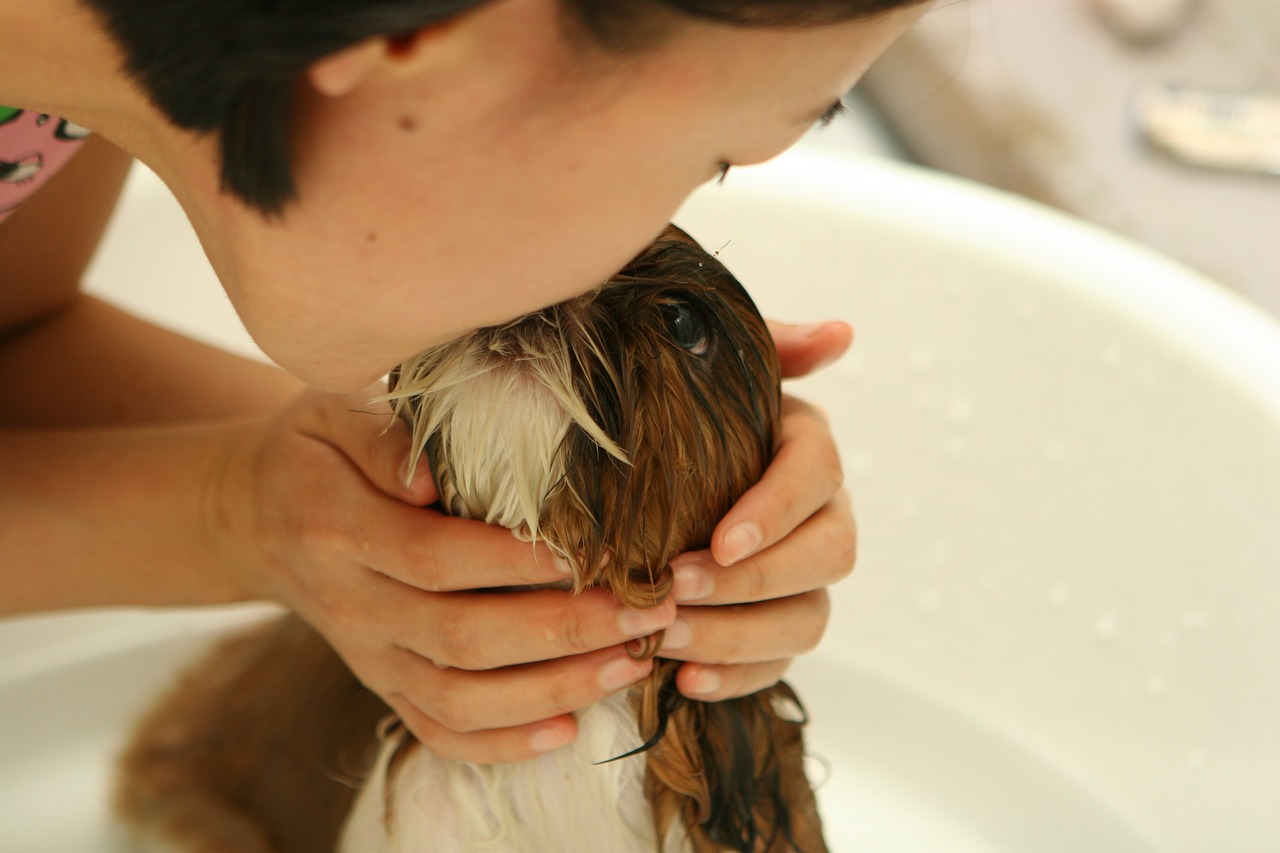
Recognizing Signs of Discomfort
When it comes to grooming your puppy, being attentive to their body language is absolutely essential. Just like us, puppies have their own ways of expressing discomfort, and it's our job as pet owners to tune in to those signals. Imagine you're at the dentist—if you're feeling uneasy, you might squirm in your chair or give a subtle grimace. Puppies do the same thing, but they might not be able to voice their concerns. Instead, they communicate through their behavior. So, let’s dive into some key signs that your furry friend may be feeling uncomfortable during grooming sessions.
One of the most common signs of discomfort is tension in their body. If your puppy suddenly becomes stiff or rigid, it’s a clear indicator that something isn’t right. Additionally, watch for whining or whimpering. These vocalizations can be a puppy's way of telling you they're not enjoying the experience. If they start to pull away or try to escape your grasp, that’s another red flag. Puppies are naturally curious and playful; if they’re trying to get away, it’s likely because they’re feeling anxious or scared.
Another behavior to keep an eye on is licking their lips or yawning excessively. While these actions might seem benign, they can actually indicate stress or discomfort. It’s akin to when we fidget with our hands or look away when we’re nervous. Furthermore, if your puppy is constantly looking around or seems distracted, they could be trying to signal that they’re not comfortable with what’s happening. Remember, grooming should be a bonding experience, not a source of fear.
Sometimes, discomfort can manifest physically. For example, if you notice any signs of aggression, such as growling or snapping, it’s crucial to stop the grooming session immediately. This behavior can stem from pain or fear, and it’s essential to address these feelings rather than push through. Similarly, watch for signs of shaking or trembling. If your puppy is visibly shaking, it’s a strong indication that they are stressed and need a break.
To help you recognize these signs better, here’s a quick reference table:
| Sign of Discomfort | Possible Meaning |
|---|---|
| Tension in body | Puppy is feeling anxious or scared |
| Whining or whimpering | Puppy is uncomfortable or in pain |
| Trying to escape | Puppy wants to avoid grooming |
| Licking lips/yawning | Signs of stress |
| Growling or snapping | Puppy is feeling threatened or pain |
| Shaking or trembling | Puppy is very stressed |
By keeping an eye out for these signs, you can adjust your grooming techniques to ensure your puppy feels safe and secure. If you notice any signs of discomfort, consider taking a step back. Perhaps give them a break, offer a favorite toy, or even take a short walk to help them relax. The goal is to create a positive grooming experience that fosters trust between you and your furry friend.
Q: How can I make grooming less stressful for my puppy?
A: Start by introducing grooming tools gradually and associate them with positive experiences, like treats or playtime.
Q: What should I do if my puppy shows signs of aggression during grooming?
A: Stop the grooming session immediately and consult a professional trainer or veterinarian for advice.
Q: How often should I groom my puppy?
A: Grooming frequency depends on the breed and coat type. Generally, long-haired breeds require more frequent grooming than short-haired ones.
Q: Is it necessary to use special grooming products?
A: Yes, using products specifically designed for dogs is important, as they are formulated to be gentle on their skin and coat.
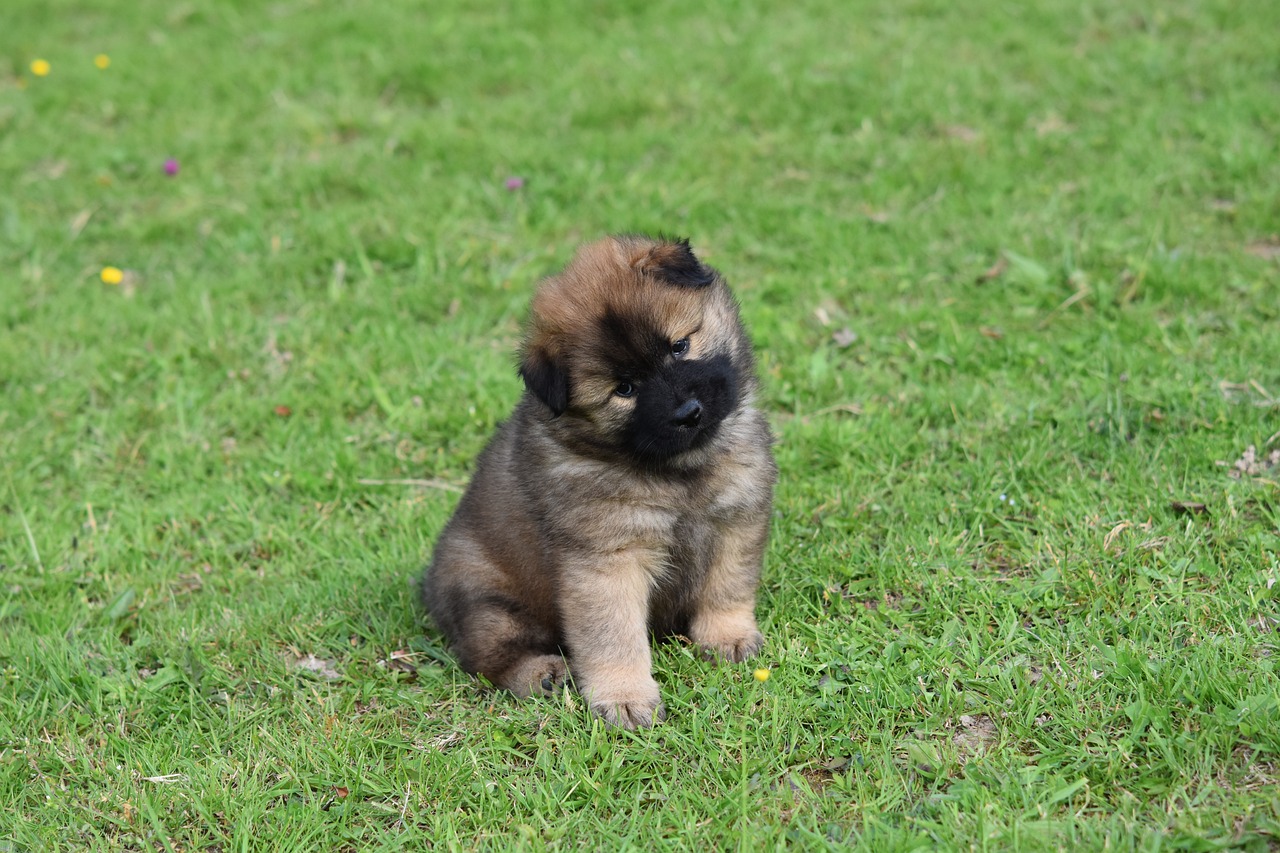
Seeking Professional Help
As a loving puppy parent, you might find yourself overwhelmed at times with the grooming needs of your furry friend. While it’s fantastic to take on some of the grooming responsibilities yourself, there are moments when seeking professional help is not just a good idea—it's essential! But how do you know when it’s time to call in the experts? Well, let’s dive into some situations where professional grooming can be a game-changer for both you and your puppy.
First off, if your puppy has a particularly challenging coat type—think long-haired breeds like the Yorkshire Terrier or Shih Tzu—you might want to consider professional grooming. These breeds often require specialized techniques to prevent matting and to maintain their beautiful coats. A professional groomer has the expertise and tools to handle complex grooming tasks that might leave you feeling frustrated or unsure.
Additionally, if your puppy is not a fan of grooming sessions at home, you might notice that their anxiety levels skyrocket during brushing or nail trimming. This is where a professional groomer can work wonders. They are trained to handle anxious pets and can often calm them down with their experience and gentle touch. Plus, a professional can teach you some tips and tricks to make grooming at home less stressful for both you and your pup!
Another reason to seek professional help is when it comes to health-related grooming tasks. For instance, if you notice that your puppy has matted fur, skin irritations, or even ear infections, it’s crucial to consult a professional. They can provide not just grooming services but also valuable insights into your puppy’s overall health. Regular check-ups from a groomer can help catch potential health issues before they become serious problems.
Now, let’s talk about what you can expect from a professional grooming session. Typically, a grooming appointment includes a bath, brushing, nail trimming, ear cleaning, and sometimes even a haircut. Here’s a quick overview of what a standard grooming session might entail:
| Service | Description |
|---|---|
| Bathing | Using high-quality shampoos and conditioners tailored to your puppy's coat type. |
| Brushing | Removing loose fur and preventing matting with appropriate brushes. |
| Nail Trimming | Safely trimming nails to prevent overgrowth and discomfort. |
| Ear Cleaning | Cleaning ears to prevent infections and ensure good hygiene. |
| Haircuts | Trimming or styling fur as needed, especially for breeds requiring specific cuts. |
When it comes to finding a groomer, it’s important to do your research. Look for reviews, ask for recommendations, and even visit the grooming facility to ensure it’s clean and welcoming. A good groomer should be patient and gentle, making sure your puppy feels comfortable throughout the process. Don't hesitate to ask questions about their techniques and experience with your puppy’s breed!
In summary, while grooming your puppy at home can be a rewarding experience, there are times when professional help is the best option. Whether it’s for specialized coat care, managing anxiety, or addressing health concerns, a professional groomer can provide invaluable services that benefit both you and your furry companion.
- How often should I take my puppy to a professional groomer? It depends on the breed and coat type, but generally every 4-6 weeks is a good rule of thumb for most puppies.
- Can I stay with my puppy during the grooming session? Most groomers will allow you to stay, but some puppies may benefit from being groomed away from their owners to reduce anxiety.
- What if my puppy has never been groomed before? It's best to start with short sessions to help them acclimate to the grooming process gradually.
- Are there specific grooming tools I should use at home? Yes, having the right brushes, nail clippers, and shampoos is crucial for maintaining your puppy's coat between professional grooming sessions.
Choosing a Groomer
Choosing the right groomer for your puppy is a decision that should not be taken lightly. After all, grooming is not just about aesthetics; it's about your puppy's health and well-being. You want someone who understands the nuances of different breeds and can cater to your furry friend's unique needs. So, how do you go about selecting the best groomer? Here are some key factors to consider:
First, start by asking for recommendations from friends, family, or your veterinarian. Personal experiences can provide invaluable insights into the quality of service a groomer offers. Once you have a few names, do a little research. Check online reviews and ratings to get a sense of their reputation. Websites like Yelp and Google Reviews can be gold mines for honest feedback from pet owners.
Next, consider visiting the grooming facility in person. This gives you the chance to observe the environment and see how the groomers interact with the dogs. Is the place clean and well-maintained? Do the staff seem friendly and knowledgeable? A welcoming atmosphere can make a significant difference in your puppy's grooming experience.
It’s also essential to inquire about the groomer's qualifications and experience. A professional groomer should have completed training and certifications, as well as a solid track record in handling various breeds. Don't hesitate to ask about their grooming techniques and how they handle anxious or difficult dogs. A good groomer will be more than willing to share their approach and reassure you of their methods.
Finally, consider the services offered. Some groomers provide a full range of services, including bathing, nail trimming, and even specialized treatments for different coat types. Make sure the groomer you choose can meet your puppy's specific grooming needs. For example, if your puppy has a long or curly coat, you'll want to ensure they have experience in handling those types.
In summary, choosing a groomer involves a mix of recommendations, research, and personal visits. By taking the time to find the right professional, you can ensure your puppy receives the best care possible. Remember, grooming should be a positive experience, and the right groomer can make all the difference!
- How often should I take my puppy to the groomer? This can vary based on the breed and coat type, but generally, every 4-6 weeks is a good rule of thumb.
- What if my puppy is scared of grooming? It's important to choose a groomer who is patient and experienced in handling anxious dogs. Positive reinforcement techniques can also help.
- Can I groom my puppy at home? Absolutely! With the right tools and techniques, you can maintain your puppy's coat between professional grooming sessions.
- What should I do if I notice my puppy is uncomfortable during grooming? Always communicate with your groomer about any concerns. They can adjust their approach to ensure your puppy feels safe and comfortable.
Benefits of Professional Grooming
When it comes to keeping your puppy looking sharp and feeling great, professional grooming offers a plethora of benefits that can make a world of difference. While you might be tempted to tackle grooming on your own, enlisting the help of a trained groomer can provide specialized care that goes beyond mere aesthetics. So, what are these benefits, and why should you consider professional grooming for your furry friend?
First and foremost, professional groomers are equipped with the knowledge and experience to handle various breeds and coat types. They understand the unique grooming needs of each breed, which means they know how to effectively manage different coat textures, lengths, and shedding patterns. For instance, a groomer can expertly handle a thick, curly coat that might be a challenge for a novice owner. This specialized care ensures that your puppy receives the right grooming treatment tailored to their specific needs.
Additionally, professional groomers utilize high-quality tools and products that can enhance your puppy's grooming experience. From gentle shampoos suited for sensitive skin to specialized brushes designed to minimize discomfort, these professionals have access to products that are often superior to what you might find in a typical pet store. This not only helps in maintaining your puppy's coat health but also contributes to their overall well-being.
Moreover, regular visits to a groomer can help in identifying potential health issues early on. Groomers are trained to spot signs of skin infections, parasites, or other health concerns that you might not notice at home. For instance, they can check for hot spots, lumps, or skin irritations during grooming sessions, allowing for timely intervention. This proactive approach can save you time, stress, and money in the long run.
Another significant advantage of professional grooming is the time-saving aspect. Grooming your puppy can be a time-consuming task, especially if you're not familiar with the process. By handing over the reins to a professional, you can free up your schedule while ensuring your puppy is in good hands. Plus, many groomers offer additional services such as ear cleaning, teeth brushing, and anal gland expression, which can be tricky for pet owners to manage on their own.
Lastly, let’s not forget the socialization benefits that come with professional grooming. Taking your puppy to a groomer exposes them to new experiences, people, and other animals, which can help in building their confidence and reducing anxiety in unfamiliar situations. This social interaction is crucial for their development and can contribute to a well-adjusted adult dog.
In summary, while grooming at home can be a bonding experience, the advantages of professional grooming are hard to ignore. From specialized care and expert knowledge to early detection of health issues and time-saving convenience, professional groomers play an invaluable role in maintaining your puppy's health and happiness. So, if you're looking to provide the best for your furry friend, consider scheduling a grooming appointment today!
- How often should I take my puppy to a professional groomer?
It depends on the breed and coat type. Generally, every 4 to 8 weeks is a good rule of thumb, but consult your groomer for personalized advice. - Can I groom my puppy at home?
Absolutely! However, professional grooming can help with tasks that require specialized tools and techniques. - What should I look for in a professional groomer?
Look for experience, certifications, and positive reviews. A good groomer should also be patient and gentle with your puppy. - What if my puppy is anxious about grooming?
Talk to your groomer about your puppy's anxiety. They can often tailor their approach to help make the experience more comfortable.
Frequently Asked Questions
- What are the different puppy coat types, and how do they affect grooming?
Understanding your puppy's coat type is essential for effective grooming. Different breeds have unique coat characteristics, such as short, long, curly, or wiry. Each type requires specific grooming techniques and tools. For instance, long-haired breeds may need daily brushing to prevent matting, while short-haired breeds might require less frequent grooming. Recognizing these needs helps ensure your puppy's coat remains healthy and shiny.
- What essential grooming tools should I have for my puppy?
Investing in the right grooming tools can make a world of difference. Some must-have tools include:
- Brushes and combs specific to your puppy's coat type
- Shedding tools to manage loose fur
- Quality shampoos and conditioners for bathing
- Nail clippers or grinders for safe nail care
Having these tools on hand will make grooming sessions more efficient and enjoyable for both you and your puppy.
- How often should I groom my puppy?
The frequency of grooming largely depends on your puppy's breed and coat type. Generally, long-haired breeds may require grooming several times a week, while short-haired breeds can be groomed once a week. It's important to establish a routine that suits your puppy's needs and helps them get accustomed to the grooming process.
- What are some positive reinforcement techniques I can use during grooming?
Using positive reinforcement can transform grooming into a pleasant experience for your puppy. Techniques include:
- Offering treats for calm behavior
- Using a soothing voice to praise your puppy
- Taking breaks if your puppy seems anxious
These methods encourage your puppy to associate grooming with positive experiences, making future sessions easier.
- How can I tell if my puppy is uncomfortable during grooming?
Being aware of your puppy's body language is crucial. Signs of discomfort may include:
- Whining or barking
- Attempting to escape or squirming
- Growling or snapping
If you notice any of these signs, it's important to stop and assess the situation. Providing a calm environment and going at your puppy's pace can help alleviate their discomfort.
- When should I consider seeking professional grooming help?
Professional grooming may be necessary if you're unsure about grooming techniques or if your puppy has a complex coat type that requires specialized care. Additionally, if your puppy is particularly anxious or uncooperative during grooming, a professional groomer can provide a calm and experienced touch. Look for groomers who are certified and have good reviews to ensure your puppy is in safe hands.
- What benefits does professional grooming offer?
Professional grooming provides numerous advantages, including:
- Access to experienced groomers who understand breed-specific needs
- High-quality grooming tools and products
- Thorough cleaning and care that you might not achieve at home
Entrusting your puppy's grooming to a professional can help maintain their coat health and overall well-being.


